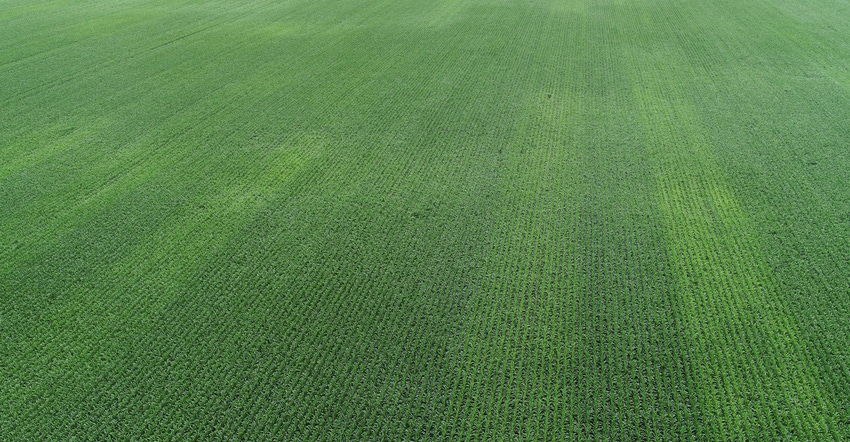
Did you see sulfur deficiency in cornfields this summer? Did it show up through either traditional scouting or aerial images taken with an unmanned aerial vehicle, satellite or fixed-wing plane? Would you recognize sulfur deficiency in corn if you saw it?
Jim Camberato, Purdue University Extension soil fertility specialist, says these are questions you should ask yourself. Twenty years ago, there was little reason to think sulfur might become deficient during the growing season, or that adding sulfur might boost corn yields. However, that’s changed, he notes.
“We’re not getting nearly as much sulfur deposited from the atmosphere today as in the past,” Camberato says. “Before utilities cleaned up smokestacks, there was often more sulfur released annually into the atmosphere than corn would need to produce high yields. Today, there is less sulfur released than what the crop needs per year.”
Shaun Casteel, Purdue’s Extension soybean specialist, raised eyebrows last winter when he released data from a two-year study on one farm showing dramatic increases in soybean yields in response to adding sulfur in a form plants can use. He’s doing trials at more locations this year. Farmers who participate in the INfield Advantage program conducted by the Indiana State Department of Agriculture are also comparing sulfur applications to not adding sulfur in soybeans, using Casteel’s protocol for conducting simple trials.
Corn trial
Camberato says corn may respond to adding sulfur in some cases, as well. He and Bob Nielsen conducted a large-scale farm trial on Ken Simpson’s farm near Morristown, Ind., to study sulfur response in corn. While yield results and economic analysis aren’t in yet, adding sulfur made a visual difference in several instances in the plots. Recognizing visual differences may be the first step to getting serious about sulfur for corn.
Sulfur-deficient crops are typically a paler-green or even yellow color, Camberato says. It can resemble nitrogen deficiency in corn, but adding N makes the sulfur impact worse. Nitrogen firing tends to occur on lower leaves first, while sulfur deficiency is distributed up and down the plant.
Sulfur deficiency can result in leaf striping in corn, but so can magnesium, manganese and zinc deficiencies, Camberato says. Tissue sampling is the best way to confirm sulfur deficiency once you suspect it, he notes. That involves taking samples from areas where you suspect deficiency and normal areas within the same field.

PLANT STRIPING: Sulfur deficiency can produce striping on corn leaves. Tissue tests can confirm it, since other deficiencies produce similar symptoms.

Since sulfur is released through mineralization in the soil, anything that affects microbes can affect how quickly sulfur is released. Excessively cool, wet or dry conditions can slow down mineralization and release of sulfur. With plants now counting on sulfur from soils to meet their needs, those conditions can cause deficiency symptoms to appear. They sometimes fade if growing conditions improve and sulfur is released, Camberato says.
“We could pick out differences in our trials from aerial images this summer where sulfur was added and where it wasn’t, especially from the air,” he says. “Now we’re waiting on yield results.”
About the Author(s)
You May Also Like




